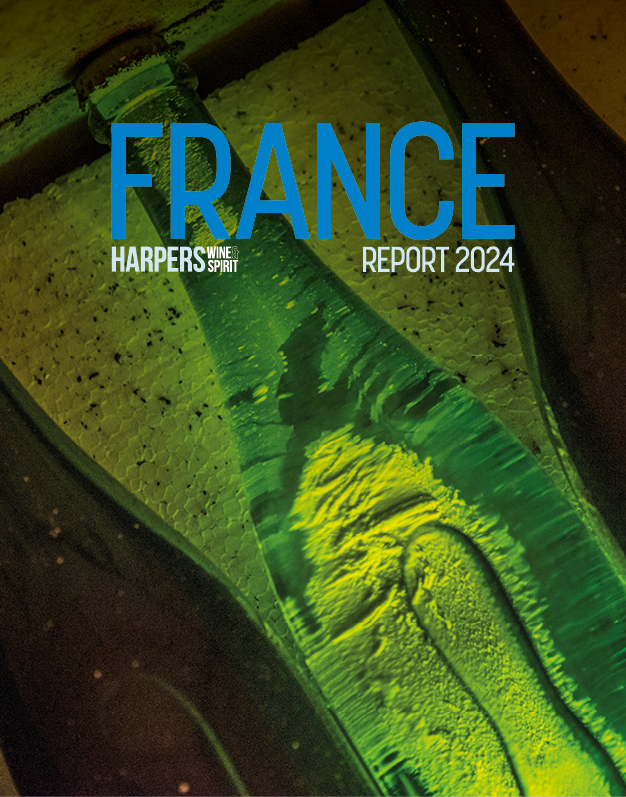Richard Siddle, California blog: Sonoma finds its sense of place
I am sure there has already been a television programme called A Time and a Place, but if there hasn't then it could be created to sum up the possibilities and winemaking philosophy for Sonoma and its winemakers.
I am sure there has already been a television programme called A Time and a Place, but if there hasn't then it could be created to sum up the possibilities and winemaking philosophy for Sonoma and its winemakers.
The first two days of my Californian tour have been a gentle whistle-stop tour of many of Sonoma's sub-AVAs regions. Discovering the
nuances and winemaking skills of producers in four main areas; Pinot Noir, Zinfandel, and high altitude Chardonnay and Cabernet Sauvignon.
Gentle in that we are being escorted around in the blacked out windows of the van version of a limousine, a vehicle more in keeping with the
Stip in Las Vegas than the rolling hills of Sonoma.
Gentle also in that we have floated our way through Sonoma courtesy of the clockwork organisation of Sonoma County Vintners, simply turning up
at wineries tasting our way through a flight of wines and then taking part in what have been a series of enjoyable and engaging discussions on issues as wide
ranging as terroir, vineyard management, alcohol reduction, pricing and whether Chelsea deserved a late penalty or not.
The quality of the discussions, like the wine, has been down to the openess, frankness and bon homie of our winemkaker hosts. Confident in their
own abilities, yes, but far more humble and keen to hear and learn from the views of their UK guests. Far more so than some of their Old School, European counterparts.
So Sonoma in a nutshell. It's all down to the weather, stupid. Well also the soil types, geology and foresight of the winemaker, but the overriding message was
that this is a wine region that is slowly but surely sussing out what it should be growing where and how.
That has not always been the case and the developments in vineyard management, plantings and understanding of the soils and better winemaking techniques are
what make the Sonoma wines what they are today.
Basically it all comes down to the fact there are 62 miles of Sonoma's coast facing the Pacific. The impact the sea has on the region changes the further inland you
go, but the huge variances in day time and night time temperatures, dominates what many wineries can and can't do. Average temperatures can switch from 75F in the day to 45F at night. Or putting the "grapes in the refrigerator" as one winemaker put it. The further inland you go the bigger and colder the winds get too.
We get our sense of this coastal influence as we drive through bright sunshine one minute, followed by soup like fog the next and then a gentle mist.
Discarding clothes, jumpers, sweat shirts one minute, and then putting them all back on again.
David Hirsch owner of Hirsch Vineyards says: "We are now a lot more area specific in our farming. There has been a growing awareness of importance of soil and typography. That's been the biggest change in our winemaking here." His own vineyard is a case in point and has been described by some as a "Burgundian village" such are the differences in its soil types and winegrowing areas. Not surprising seeing as it sits on the St Andreas vault.
Hirsch adds: "We are now mapping the soil types and looking block by block at what we do. There are so many permeations of soil types within a block.
Can be every quarter of an acre a different soil type. We will need generations to fully understand our sites, wines that really find the expression of our soils."
He adds: "It is all about the three Ps: people; place; and plants."
Adam Lee at Siduri adds: "My mum came from Dallas and said she could tell which milk came from each cow and what field and that is similar here now with our wine and Hirsch really sums this up."
Bob Cabral, winemaker at the prestigious Williams Seleym winery, a largely Pinot Noir specialist, says: "There are not even winemakers born yet who will be able to get the most potential from our land. There is the opportunity to make even more wonderful wines here."
Sonoma in a nustshell
In all Sonoma has 13 separate sub-AVAs, all planting a variety of grapes, but mostly centring on one or two bespoke to that area.
Chardonnay is the biggest variety with 6,600 hectares, Pinot Noir 5,000, Cabernet Sauvignon 5,000 with Merlot and Zinfandel around 2,000
and Syrah at 800 - a varietal many producers would like to see as much higher.
It accounts for 6% of California's total production and is a region for premium wine. The sweet spot in these parts are for wines in the $18 to $35 region. Not that we saw many of those in our tastings, with wines put on show more in the plus $40 to $150 bracket.
Cellar door is of increasing importance to wineries in these parts. One of the biggest impacts of the recession has been the willigness of the bigger wineries to go direct to consumers more and open up their cellar door ranges. Bob Cabral, winemaker at the largely Pinot Noir specialist, Williams Selyem, says it is
now nearly 100% cellar door. Many others are over half cellar door with around 300 of the 450 wineries in the area operating a tasting rooms and full cellar door service. It has been the mid sized wineries reliant on distributors for their business that have been the hardest hit through the recession, adds Cabral.
The pricing strategy across the region clearly has ramifications on the chances (or even a desire ) to get involved in exports, with the UK a long way down their
priorities. David Ramey at Ramey Cellars says it is arguably as much of a challenge, and more important to the winery, to get distribution in another state in the US that it is to focus on trying to drive sales overseas, never mind the price challenges of the UK. For them developing another US state is part of their export strategy.
The picture painted by our host, and super tour organiser, Honore Comfort, executive director of Sonoma County Vintners, is one of a network of some 1,800 mainly family-owned small growers making bespoke, artisan grapes for 450 larger wineries. Most supply a number of wineries, but the level of commitment and dedication to a winery's needs are what determine whether they remain on that winery's books.
Ulises Valdez a grower at Valdez Vineyards for the Paul Hobbs winery explains: "We have to listen really closely to what they are saying. We cannot be selfish in the grapes we grow. We need to be open, and have the passion to make the best possible grapes we can. We share everything."
Cost per grapes works out roughly 10x the cost of the winery's bottle, says Cabral. A $50 wine would expect to be paying $5,000 a tonne for its grapes.
Hence it does not pay too much for a grower to experiment with uncommercial grapes.
That said there are some 50 odd varietals grown across Sonoma, with Italian varietals pretty widespread and talk of a surge in interest for growing blatantly cash chasing varietals such as Malbec, with Merlot's place in this post-Sideways world up for grabs.
* Next time we will talk about the possiblities for Chardonnay, Pinot Noir and, Cabernet Sauvignon







